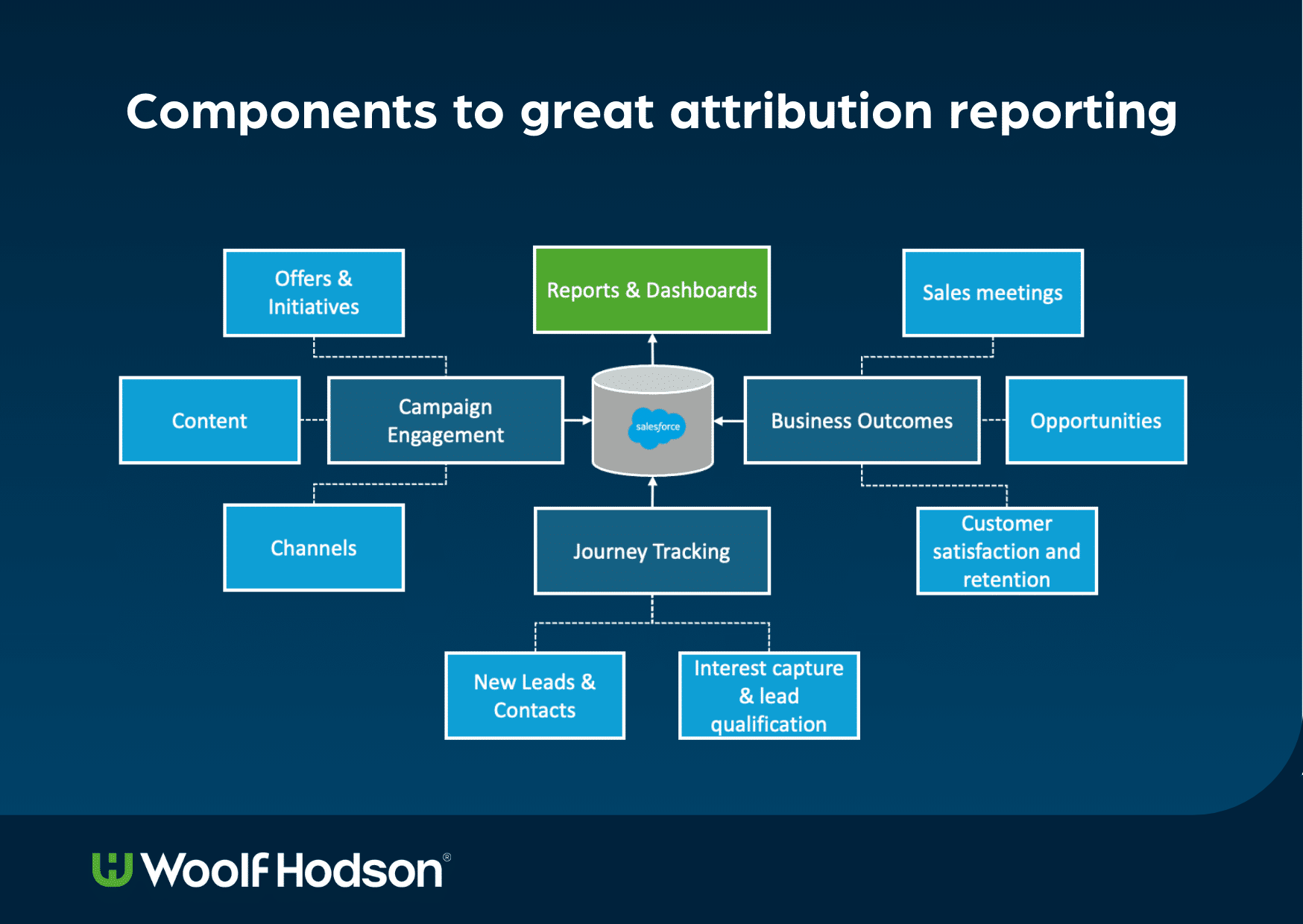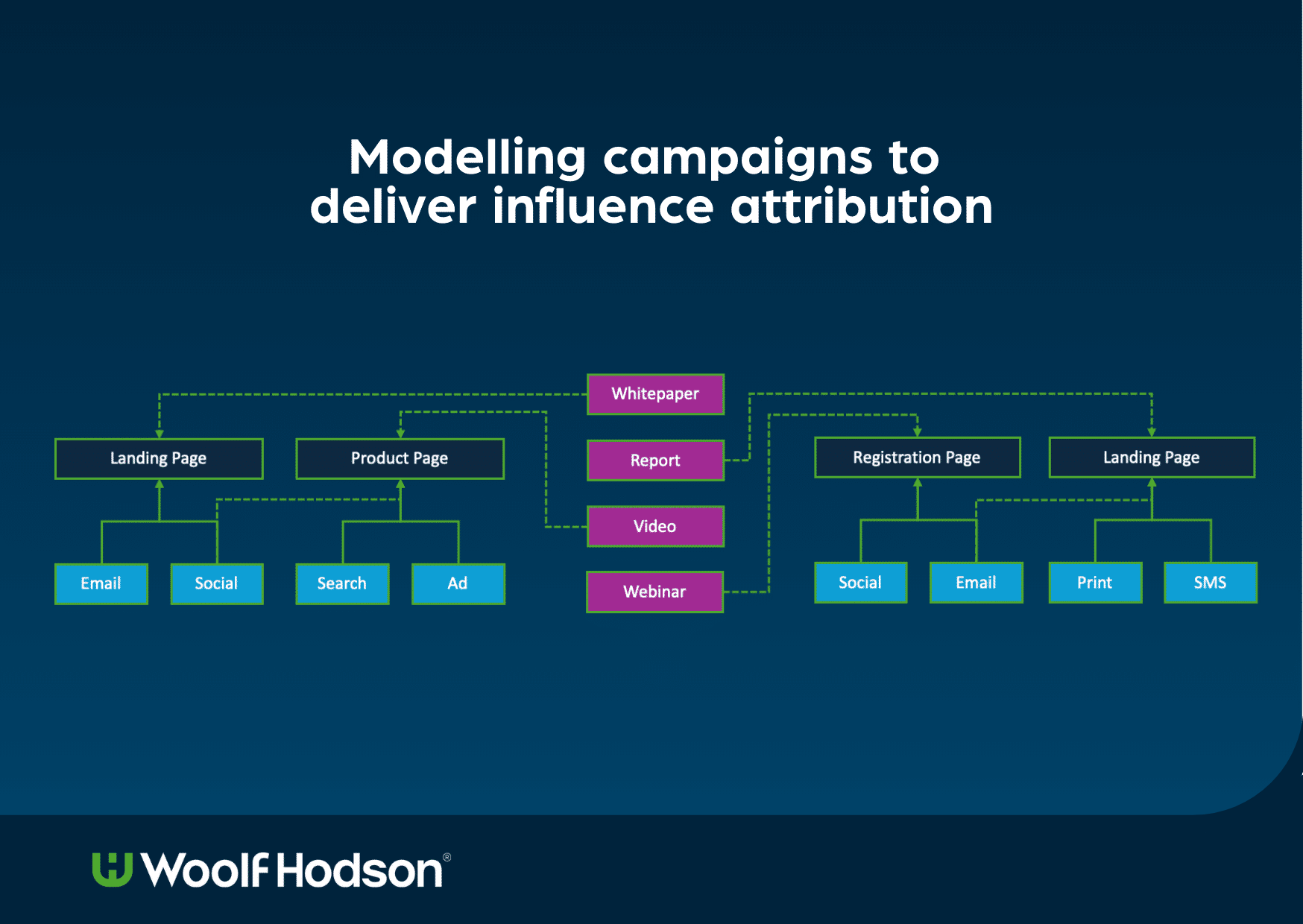
Despite marketing technologies’ promise, organizations still struggle to link their efforts to measurable business outcomes. Platforms like Salesforce offer structured ways to track campaigns, but turning data into clarity for most teams remains a challenge.
Operational inefficiencies, fragmented workflows and inconsistent data inputs continue to stand in the way. Without addressing these core issues, even the most advanced CRM can’t deliver the unified view marketers need to measure impact and ROI.
Fragmented data, rigid structures and attribution
Engagement tracking is the foundation for understanding marketing performance, optimizing touchpoints and driving conversions. Take Salesforce, for example, where campaigns are flexible, customizable data objects. This structured approach can be more of a constraint than an enabler, as the strict top-down path often limits the flexibility marketers need.
Best practices suggest a more intuitive approach — starting with a broad initiative, such as a Q1 marketing push, then organizing by channels, such as social or email, before drilling into individual campaigns.
This hierarchy provides structure but can also restrict the ability to adapt and analyze data dynamically. If you want a more agile and nuanced view of performance, you must understand and work around these constraints.

Real-world customer journeys don’t follow a straight line. A prospect might receive an email, visit your website and then submit a form under an entirely different tracking structure. Or they may engage with a social post, disappear for two weeks and return later to convert.
Within the rigid framework, these interactions remain disconnected, preventing marketing teams from following a “real-time” journey to see the whole picture.
To understand engagement, you need a connected, 360-degree view that links every touchpoint, letting you map the nonlinear paths customers take and optimize marketing strategies accordingly.
Dig deeper: Why you should add predictive modeling to your marketing mix
Overcoming limited insights
Salesforce’s rigid data structure makes working with its one-to-many relationships challenging. While a parent record can have many children, the system struggles with complex, many-to-many connections.
A single email with multiple CTAs shouldn’t be stuck in one bucket. One way to overcome this is by designing systems that break down data barriers and enable marketers to track interactions across any customer journey, providing a more holistic view of impact.
Content is a top-value asset, but difficult to track. A single piece of content often appears across multiple channels and campaigns. However, the default framework forces duplication or oversimplification, leading to the loss of critical insights.
By linking content dynamically across campaigns and introducing a centralized structure for marketing assets, it’s possible to reduce duplication and gain clearer insight into campaign performance. It provides a complete view of campaign performance and intended and unintended customer journeys.
Marketing teams gain more relevant insights by seeing campaign engagement and audience journeys. These insights then facilitate more efficient content management and optimization at scale.
A new approach: Modeling, automation and dynamic content
Most marketers still struggle to track content performance effectively. Yet, turning content into actionable insights is essential for optimizing strategy and proving ROI.
Producing high-quality content is a considerable undertaking. It requires time, resources and creative effort. Despite this investment, the visibility needed to assess its real impact is often missing. Without this capability, marketing teams aren’t just missing opportunities – they are flying blind, unable to see what drives success.
The sheer volume of campaign setup can become a full-time job in large marketing teams. Every initiative requires manual campaign creation, adding the right UTMs and coordinating across teams. Each action introduces inefficiencies and space for human error. It’s a clunky, time-consuming process.
Embedding automation directly into workflows can significantly reduce manual effort and streamline execution. Automating UTM generation and streamlining campaign creation removes much of the manual burden. But efficiency is just one part of the equation.
More importantly, engagement data is captured and analyzed more dynamically. Marketers often have to fit insights into a predefined framework. This can lead to confirmation bias. Flexible data models allow marketers to explore engagement from multiple angles, resulting in a more accurate and nuanced understanding of audience behavior.
Dig deeper: Unlocking the full customer journey with advanced marketing measurement models
The outcome: Better ROI, clarity and efficiency
Instead of adding yet another platform, marketing teams should focus on extracting more value from their existing investments.
For many organizations that use Salesforce, the engine for effective campaign modeling is already in place. It can handle the complexities without requiring additional tools or costly integrations when paired with the right processes and strategic thinking.
Letting automation do the heavy lifting enables marketing teams to record every traffic-driving action as a campaign touchpoint passed through the system so that influence is attributed correctly.

This kind of automation eliminates manual effort, reduces gaps in reporting and ensures a seamless, accurate view of campaign performance attribution — without requiring a full-time team to manage it.
Automation isn’t just about efficiency. It’s about unlocking the insights needed to refine strategy, maximize ROI and ensure every piece of content serves its purpose.
By eliminating manual tracking headaches and uncovering real attribution data, marketing teams gain the clarity they need to drive smarter decisions, optimize investments and ultimately, turn content into measurable impact.
The post How smarter campaign modeling and automation drive real marketing ROI appeared first on MarTech.
